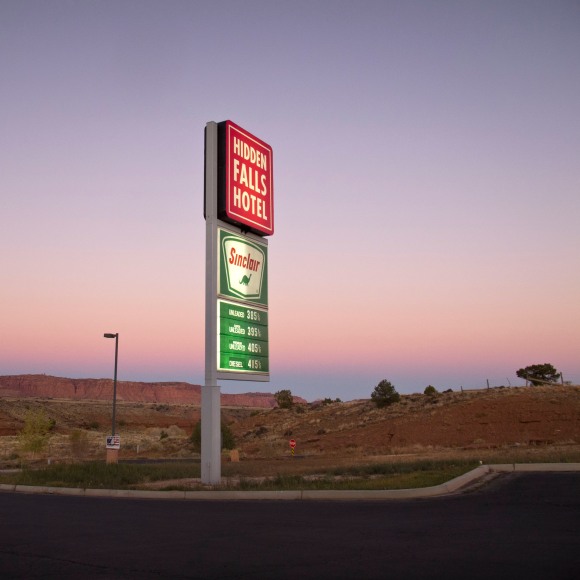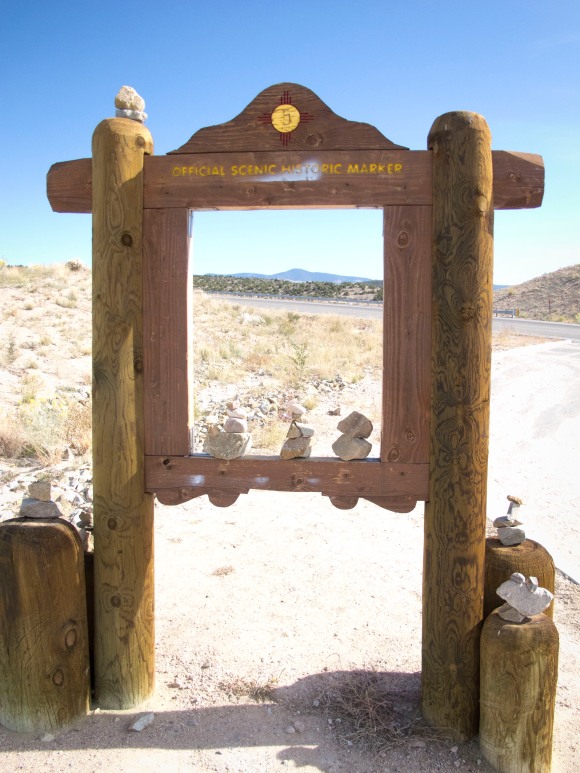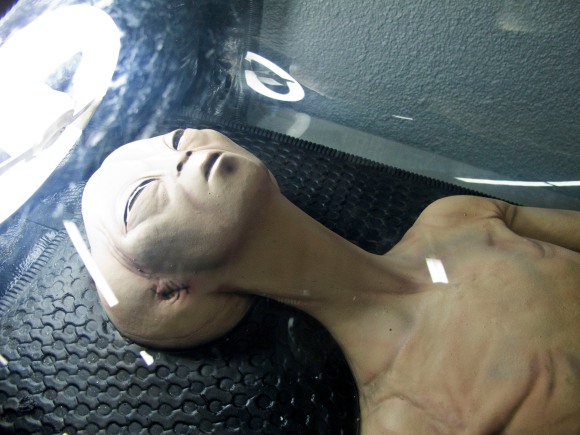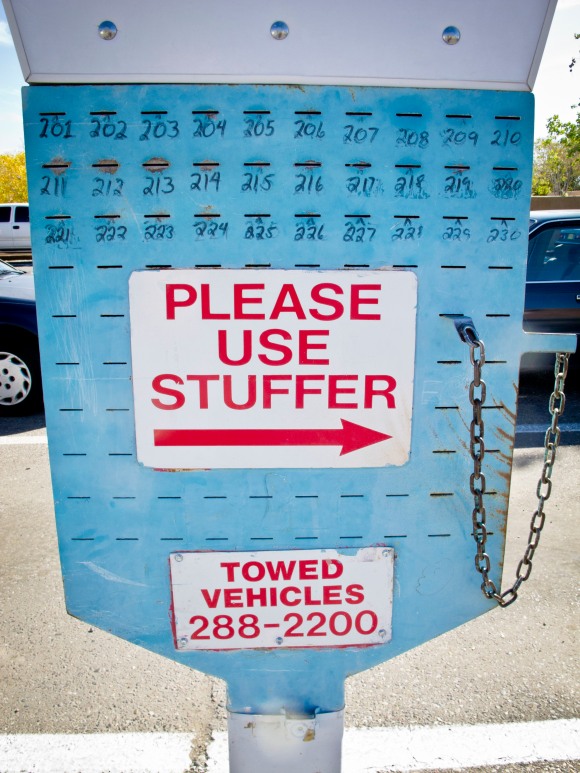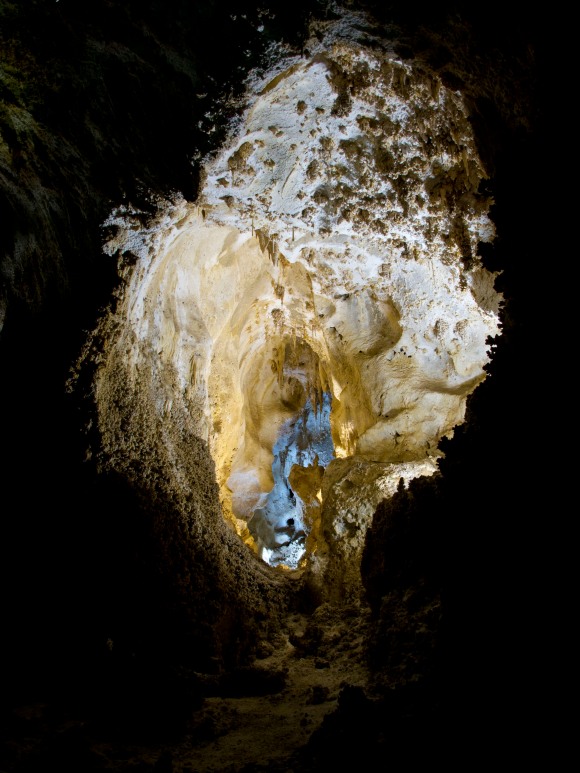After snow and Capitol Reef, our stop in Panguitch was to visit nearby Bryce Canyon National Park. As noted in our atlas, Bryce Canyon should really be called ‘Hoo Doo Plateau’, because the park is famous for its hoo doos and not a canyon at all. The park is fairly small in size and has a great scenic drive that covers almost the entire thing. We stayed in a hotel again here because of the forecast – cold! However it wasn’t too cold to hike, and our day ended up being pretty much perfect.
We did a hike called Queen’s Garden which looped down into some amazing hoo doo formations and then caught another trail called the Navajo Loop to make a nice round trip. The hoo doos here don’t look like the ones in Drumheller, because these ones are shaped by rain, snow, and ice (Drumheller’s hoo doos are shaped by wind). Compared to the harsh and hard-looking red rock at Arches, the rock formations here were a lighter red with bands of orange, yellow, and white, and looked sandy and soft (for a rock). Our hike passed a through an awesome garden of cairns that visitors have built, a large wall aptly named ‘Wall Street’, and a crazy switchback trail that led us back to the rim of the natural ampitheatre. Very spectacular!
 A doorway carved in the hoo doos along Queen’s Garden Trail
A doorway carved in the hoo doos along Queen’s Garden Trail
After Bryce we headed to another of Utah’s treasures – Zion National Park. This park is probably the most visited of the three (Bryce, Arches, Zion), with so many visitors that during the busy season you are not allowed to bring a private vehicle into the park but instead ride a park shuttle along the scenic drive. Prior to the implementation of the shuttle the park welcome about 5,000 cars a day at peak, and only had 450 parking spots! That is insane. Luckily by visiting in the fall we avoided both the crowds and the shuttle, and were able to drive the park at our own pace in our own car. Because of the temperature and forecast for rain we spent another night in a hotel, this time in nearby Hurricane. By the next night the weather had cleared enough that we camped in the park.
 The Virgin River which runs through Zion National Park
The Virgin River which runs through Zion National Park
It was still pretty cold while we were exploring the park so unfortunately we didn’t do the Angel’s Landing hike which is said to be the best in the park and on the list of the best in America. However, we did do some smaller hikes including a couple to viewpoints and two to some neat waterfalls that you can walk behind. We also drove through the park’s famous 1 mile tunnel that was built in the 1920s and literally goes right through a mountain.
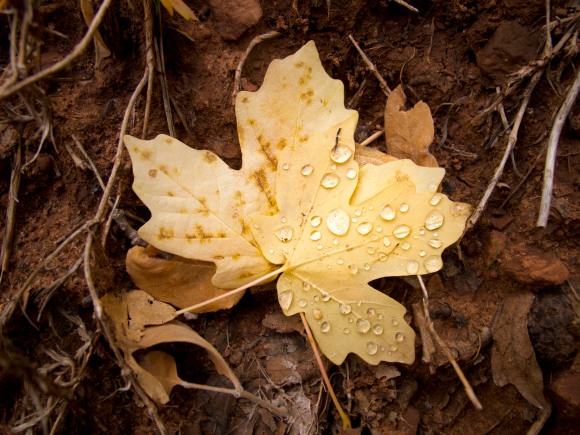 The fall colours in Zion were beautiful
The fall colours in Zion were beautiful
After our night of camping we contemplated attacking Angel’s Landing but then realized we had a flat tire! Luckily the 4Runner is prepared for such emergencies and we spent the morning taking down the spare, jacking up the car, and (after a lot of grunt work) removing the flat tire and getting the spare on. We took the tire to a shop in town hoping that it could be patched, but unfortunately it’s not fixable. This is the first car trouble we’ve run into so I’d say we’re still pretty lucky.
After leaving Zion we drove to Arizona, towards the Grand Canyon. Although we’ve heard the North Rim is awesome, we headed to the South Rim because the campgrounds and visitors centre at the North Rim are closed for the winter. We didn’t make it to the Canyon yet, but had a nice drive through Arizona, and saw an amazingly large dam.
We eventually made it to Flagstaff, which is further south than the Grand Canyon, but much cheaper. It ended up being a great idea to stay at a hotel, as a crazy snowstorm happened overnight with a low around 12 F. Look how much snow got on the car!
We should make it to the Grand Canyon tomorrow though!












